October, time for chestnuts... Excellent roasted, boiled with the scent of rosemary, in legume soups or ingredient to make excellent desserts. And a chestnut dessert is the mouth-watering recipe we will tell you about in this article: the Castagnaccio (a chestnut thin cake).
An autumnal dessert of peasant origin typical of Tuscany, Castagnaccio is made with chestnut flour, raisins, pine nuts and rosemary. It has a firm texture and a very distinctive taste, rustic and not very sweet.

Origins of Castagnaccio
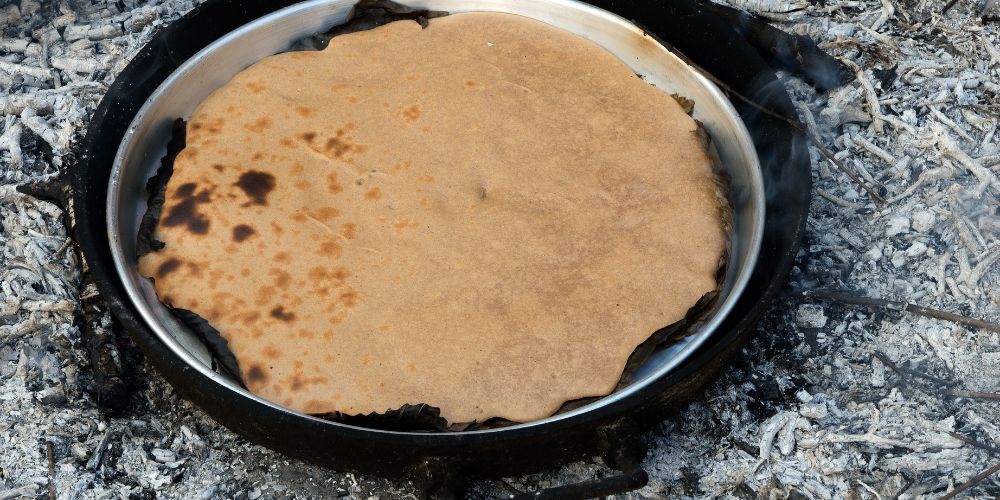
The ancient Castagnaccio recipe
Castagnaccio is a rustic dessert that originated as a poor man's dish in the areas of the Apennines between Tuscany and Emilia Romagna regions, where chestnuts were the staple diet of the peasant population; it is known by different names and variations depending on location: ghirighio, pattona, toppone, baldino and migliaccio.
Castagnaccio was once called 'wooden bread' or 'poor man's bread' because of the simplicity of its ingredients. In fact, it was originally prepared only with chestnut flour, water and a little extra virgin olive oil and was baked on hot stones; over time, this dense and nutritious dough was enriched with pine nuts and raisins, until it became the traditional version we can enjoy today.
Following the Italian economic boom after World War II, Castagnaccio was almost forgotten, but in recent times it has once again become the star of the autumn season so much so that the Castagnaccio National Day is celebrated in October!
The history of Castagnaccio
The first news about Castagnaccio dates back to 1500.
According to the humanist Ortensio Landi's writings in the Commentario delle più notabili et mostruose cose d'Italia e di altri luoghi (Venetia, 1553) the invention of Castagnaccio is due to Pilade from Lucca, "the first who made castagnazzi and of this he reported praise."
Starting in the 19th century, Castagnaccio was enriched with raisins and pine nuts and its recipe spread to the rest of Italy.
At the end of the 1800s, the famous gastronome Pellegrino Artusi included Castagnaccio in his collection of recipes entitled 'Science in the Kitchen and the Art of Eating Well' as "Migliaccio di farina dolce volgarmente castagnaccio" (Recipe 240) and, since then, Castagnaccio began to appear in cookbooks as well.
Ingredients and preparation
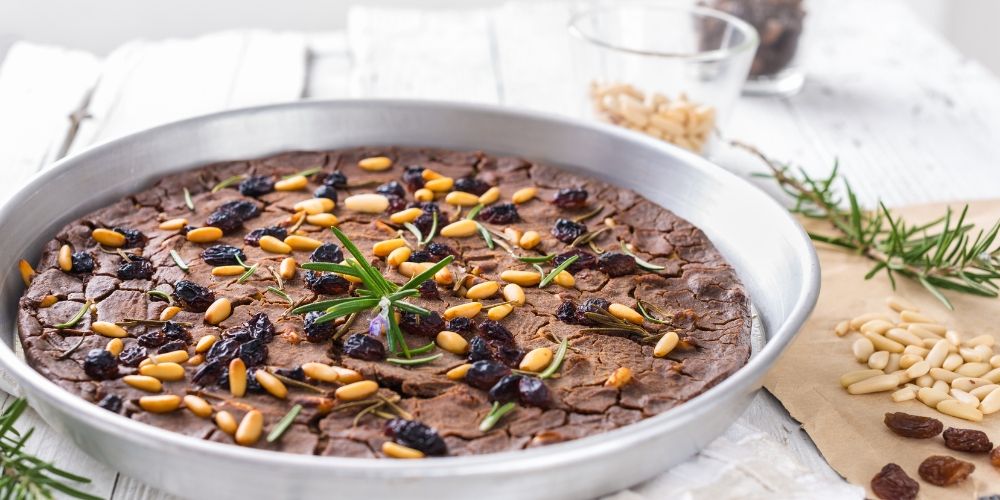
Freshly baked Castagnaccio
Chestnut flour 300 g
Water 500 g
Pine nuts a large handful
Raisins a handful
Rosemary 1 sprig
Extra-virgin olive oil 40 g
Fine salt a pinch
To prepare the castagnaccio, start by soaking the raisins in cold water and continue by sifting the chestnut flour into a large bowl and adding the water gradually while stirring; when the dough has reached a smooth and homogeneous texture, add the pine nuts and the drained raisins, keeping a small amount to sprinkle over the surface of the castagnaccio before baking it; add the salt, then mix the dough carefully.
At this point, oil a low, round cake pan, preferably made of copper, and pour in the mixture. Sprinkle the surface of the chestnut cake with the pine nuts and raisins and the fresh rosemary needles you have kept aside and bake at 180° for 25-30 minutes.
When a slightly "cracked" crust has formed on the surface and the pine nuts have a nice golden color, your Castagnaccio is ready!
Now it's time for you to enjoy it, hot or cold, on its own or accompanied with ricotta or chestnut honey, with a glass of vino novello or vin santo.
Chestnut flour
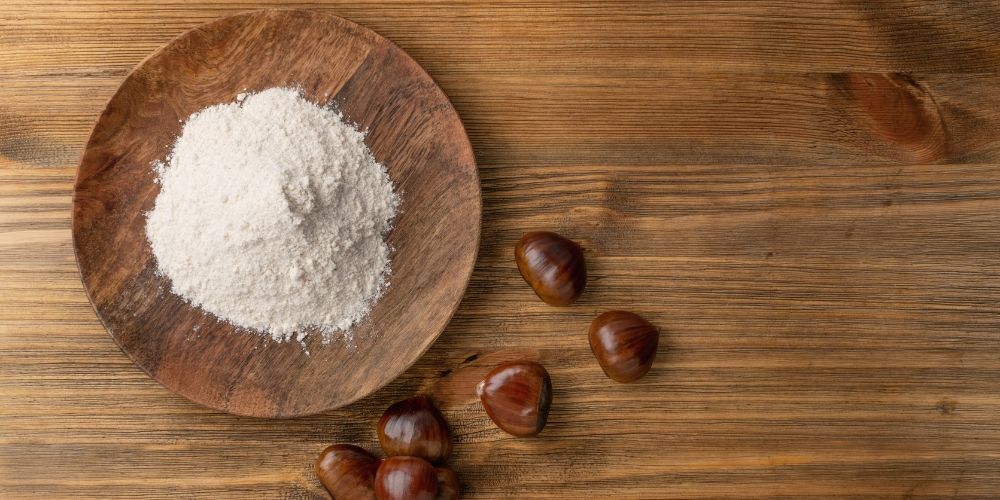
Chestnut flour for Castagnaccio
The traditional recipe of Castagnaccio is very simple but, for a workmanlike castagnaccio, it is advisable to use the best quality sweet chestnut flour that is on sale from late November.
Chestnuts are harvested by hand between late September and mid-November; the kind intended for flour production are taken to a drying room, called a metato in Garfaganana and Versilia, seccatoio in Mugello and Amiata Mount area.
A metato/seccatoio is a small room divided horizontally by a wooden lattice: in the lower part a fire is lit with old chestnut wood, while a layer of chestnuts to be dried 40/80 cm high is arranged on the trellis.
After having spent 30/40 days in the metato/seccatoio, the chestnuts are ready to be peeled for grinding, the final stage, traditionally done in water-powered stone mills.
By the beginning of November, the chestnut flour is ready, with its unmistakable aroma, typical sweet taste, dark ivory color and very fine texture.
A curiosity about Castagnaccio
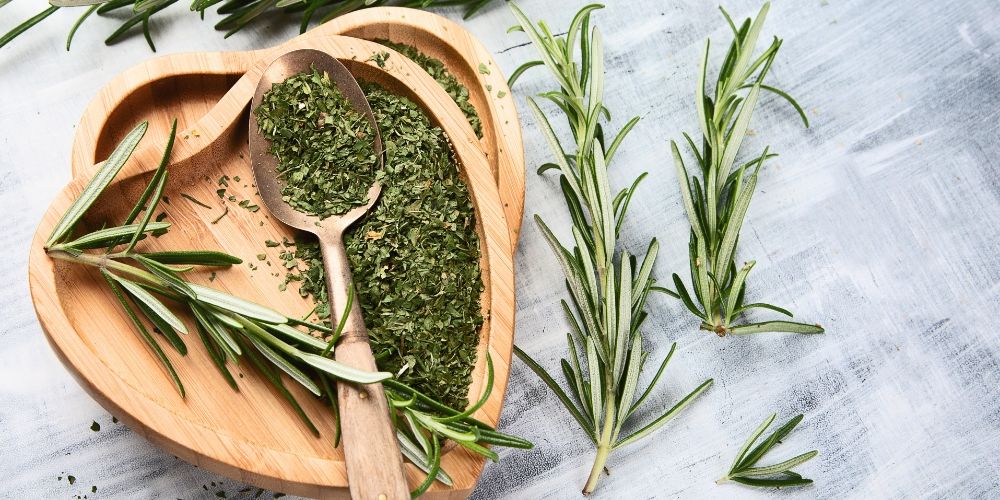
The romantic legend of Castagnaccio
A romantic legend has it that the rosemary needles used to scent Castagnaccio had the power to make people fall in love: the young man who ate the cake offered to him by a girl would then ask her to marry him!
If, by reading this article, we have made your mouth water, you just have to plan your fall trip to Tuscany and enjoy a great Castagnaccio, but if you just can't resist the temptation to make it at home, you can buy some good chestnut flour and try to make it on your own!
About the author
Written on 03/11/2023


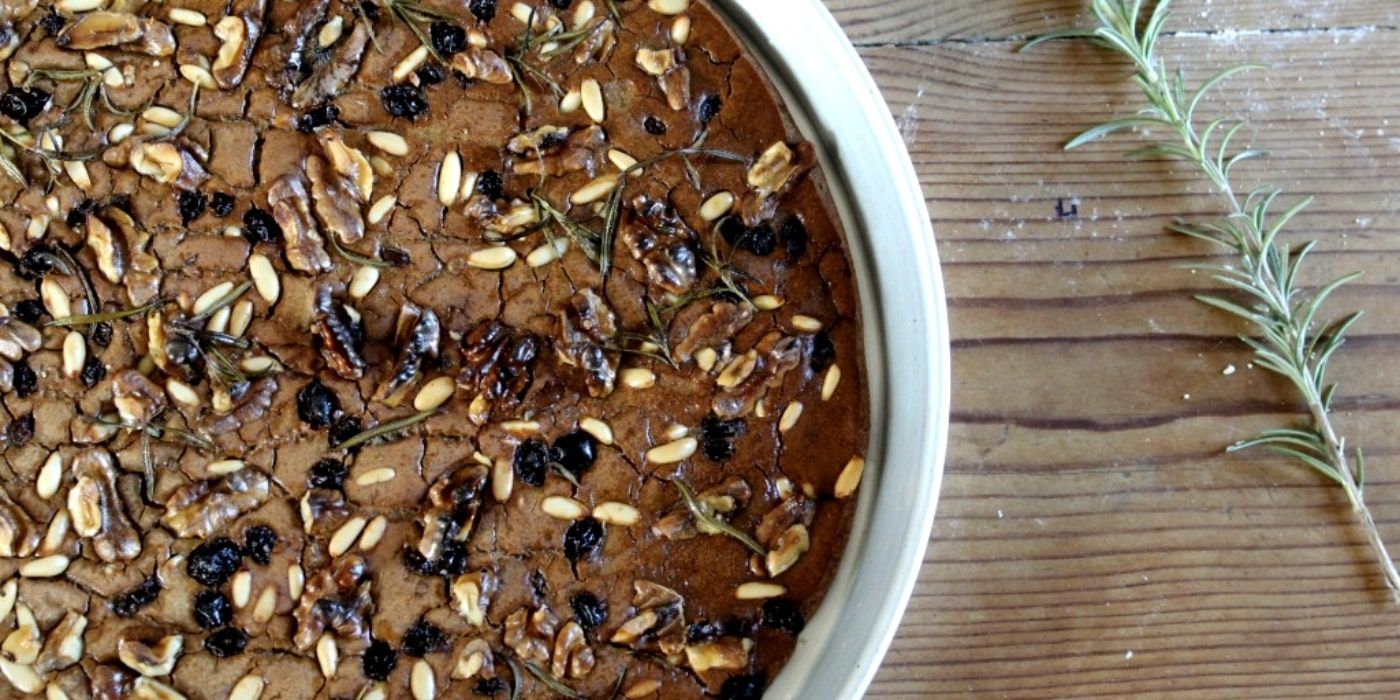
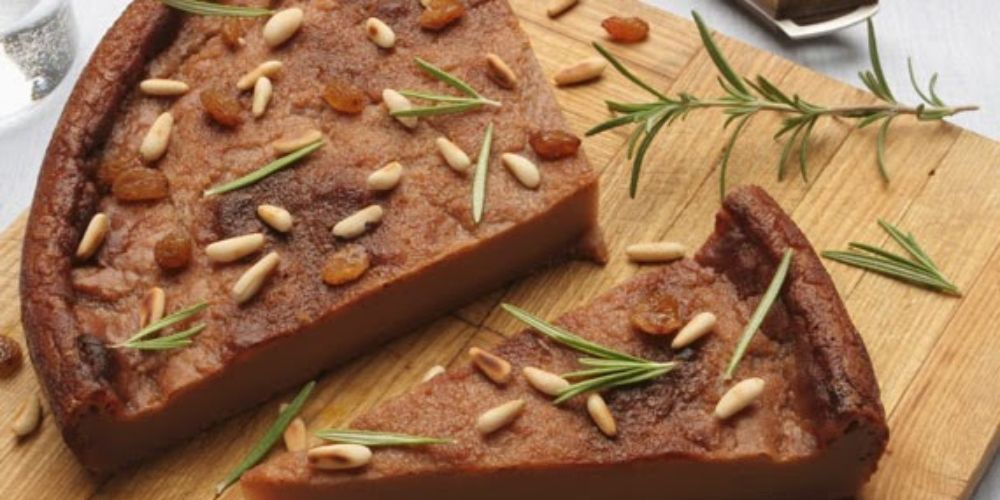
Mariateresa Bonanotte
From 'poor man's bread' to the star of fall desserts, here is the Castagnaccio! Let's discover this delicacy together.